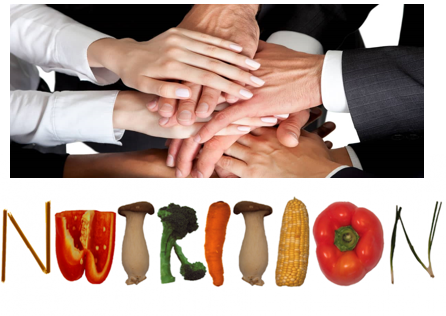
Table of Contents
What is Multi-Sector Nutrition Program (MSNP)?
- In simple words, multi sector nutrition program refers to the program which is implemented through joint/collective effort from multiple sectors to improve nutrition status of the people.
- It is a joint effort towards a single objective i.e. improved nutrition status.
- It also fights back against malnutrition issues throughout the country/region through combined effort from all the sectors.
What is Multi-Sector Approach?
- Multisector approach is one of the pristine concepts that involve collaboration and coordination among various governmental, local, and non-governmental authorities for implementing various strategies in various fields of health, economy, business, etc.
Goal and Objective of MSNP:
- According to World Health Organization (WHO), the goal of MSNP is ‘to take the country on the path towards significantly reducing chronic malnutrition to ensure that it no longer becomes an impeding factor to enhance human capital and for overall socio-economic development’.
- The goal of MSNP is to improve maternal, adolescent and child nutrition by scaling up necessary nutrition sensitive and nutrition specific interventions.
Who are the Stakeholders of MSNP?
Components of MSNP might differ between the countries/regions. However, in general, stakeholders of MSNP can include:
- Health
- Education and research
- Water, Sanitation and Hygiene (WASH)
- Agriculture and Livestock
- Gender equality and equity
- Nutrition monitoring, evaluation, research and surveillance
- Social mobilization and behavior change communication
- Finance, budget and planning
Advantages of MSNP:
- One of the effective ways to address malnutrition due to synergistic effect from different sectors
- Enables stakeholders to address multi-factorial causes of malnutrition
- Ensures sustainability of the nutrition programs and provides a sustainable solution to malnutrition and poverty.
- Combined efforts from all the sectors will help to fight back malnutrition efficiently and sustainably.
- Promotes efficient utilization of resources
- Increases multi-sectoral capacity and potential
- Encourages food security; water, sanitation and hygiene, improved health status, increase in agricultural productivity and other aspects in a comprehensive manner
- Increase the availability of micro-nutrient-rich foods through nutrition intervention programs
- Reduces nutritional deficiencies
- Ensures funding from different mechanisms and sectors
- Strengthens mutual accountability and shared responsibility
Limitations/Challenges of MSNP:
- Lack of political commitment and support
- Lack of accountability and commitment among the stakeholders
- Weak collaboration and coordination among the stakeholders
- Lack of strong advocacy from all levels in order to cope up with the momentum of a multi-sector approach.
- Limited human and financial resources
- Insufficient knowledge of task division to all the sectors to implement specific parts of the plan.
- Lack of trained professionals and a high turnover in the government sector due to a low incentive
- Lack of visible leadership by the concerned authorities
- Lack of budget allocation and distribution in various nutrition intervention programs.
- Lack of bottom-up planning
- Lack of monitoring and evaluation strategies in developing countries like Ethiopia and Nepal
- Lack of advanced nutrition indicators in developing countries.
- Lack of effective reporting system
- Weak institutional and individual capacities
References and For More Information:
SOURCES
http://www.searo.who.int/entity/healthpromotion/case-study-nepal.pdf?ua=1
https://scalingupnutrition.org/wp-content/uploads/2013/03/Nepal_MSNP_2013-2017.pdf
https://www.fantaproject.org/sites/default/files/resources/FANTA-MultiSectoral-Nutrition-Aug2017.pdf
https://www.usaid.gov/sites/default/files/documents/1867/USAID_Nutrition_Strategy_5-09_508.pdf
https://extranet.who.int/nutrition/gina/en/node/23190
https://scalingupnutrition.org/about-sun/the-vision-and-principles-of-sun/how-do-countries-join/
http://www.nnfsp.gov.np/PublicationFiles/a1a1d4b5-3db9-4668-a93b-921caca37d3d.pdf
https://scalingupnutrition.org/wp-content/uploads/2019/07/A-Road-Map-to-MSNP-II-in-Nepal.pdf
https://www.unicef.org/eu/css/Press_Release_-_English-MSNP_II_Launch-final.pdf
http://www.chd.gov.np/downloads/Multi_Sector_Nutrition_Plan_MSNP.pdf
https://advocacy.thp.org/2014/02/20/552/
https://www.nutritionintl.org/2016/01/the-power-of-the-multisectoral-approach/
https://journals.sagepub.com/doi/10.1177/15648265110322S203
https://www.popline.org/node/299465
http://pib.nic.in/newsite/PrintRelease.aspx?relid=104048
https://scalingupnutrition.org/about-sun/the-vision-and-principles-of-sun/
https://www.ennonline.net/fex/54/multisectornutritionplanningnepalanduganda